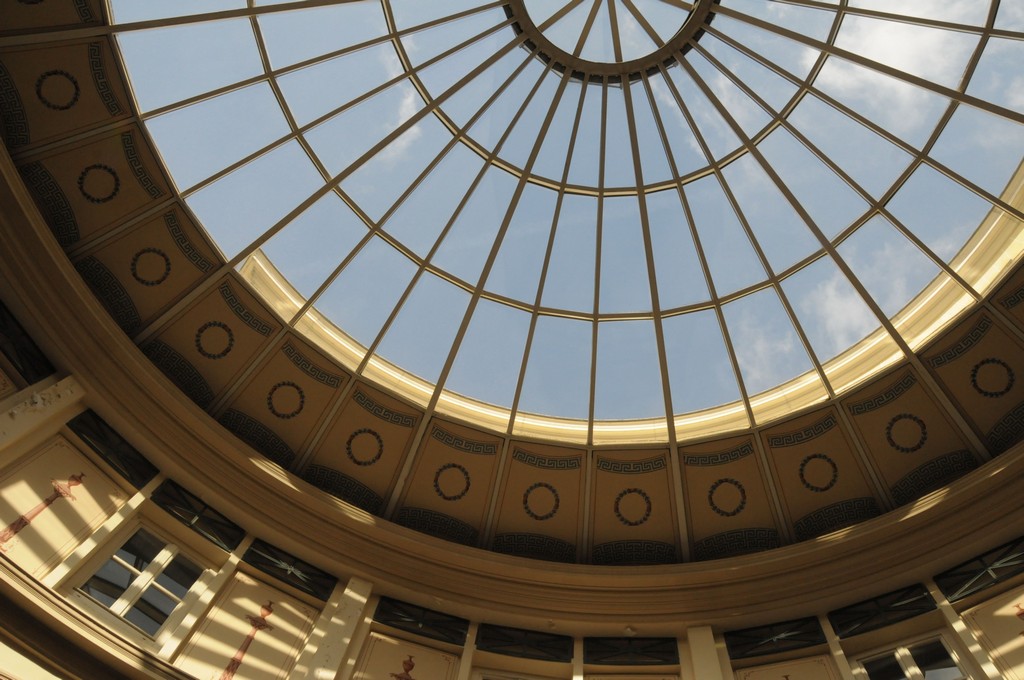
The dome of the Galerie Colbert
© Antonio Ca' Zorzi (2011)

The rotunda of the Galerie Colbert
© Antonio Ca' Zorzi (2011)
The Galerie Colbert
When you exit the Galerie Vivienne through rue Vivienne near Jean-Paul Gaultier's fashion and perfume shop, you will find the entrance to the Galerie Colbert immediately on the left. Built in 1826 by architect Jacques Billaud, commissioned by the Adam & Cie company, the Galerie Colbert was intended to attract customers from the Galerie Vivienne and the Palais-Royal. Still in a neo-classical or Pompeian, which had become fashionable with the associated architects Charles Percier and Pierre François Léonard Fontaine, we discover, under a glass dome, painted decorations, the "grotesques": a recurring theme in classicist art, inspired by the frescoes in grottoes excavated and copied at the end of the 15th century by Renaissance artists on the ceiling of Nero's "Domus Aurea" (Golden House) in Rome. The dome was completely renovated in the 1980s, but is not restored to its exact original form. In its center we find a statue off Eurydice bitten by a snake, created in 1822 by Charles-François Nanteuil. Along the gallery, false marble columns bear the same motifs as the neighboring galleries: the caduceus, symbol of the ancient god Hermes, referring to trade. Above the entrance arch you see a painted portrait of Jean-Baptiste Colbert, minister of Louis XIV, who promoted trade. Colbert used to live in a villa built by the great 17th century architect Louis Le Vau, situated on the site the gallery stands on. Acquired by the Bibliothèque nationale (National Library) and restored in 1985, the gallery now houses the National Institute of Art History (INHA), which connects the institutes of higher education in archeology and history of art.
This ends our journey which was the daily walk of great writers such as Balzac, Colette, Cocteau or Benjamin....And while you think of them you can finish your visit having tea or coffee in the tea room of the Galerie Vivienne or with a drink at the Vivienne pub on the side of rue des Petits-Champs.
